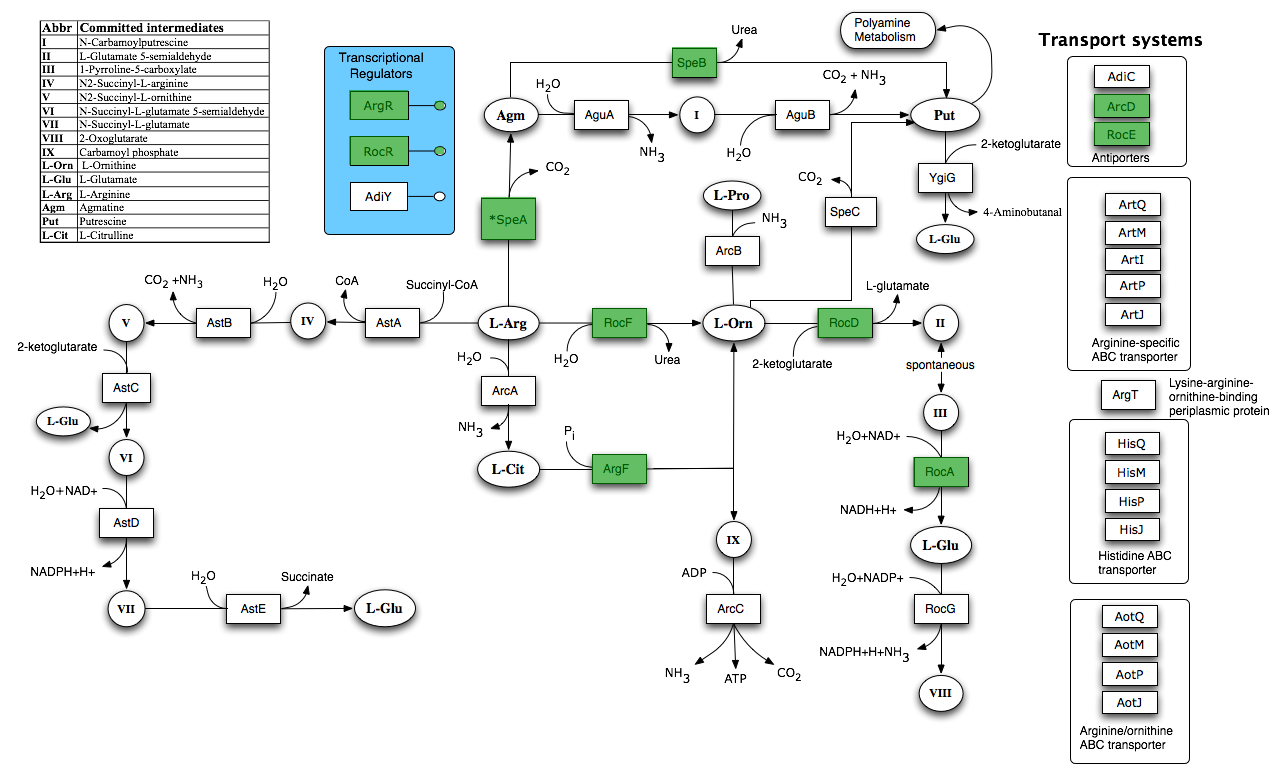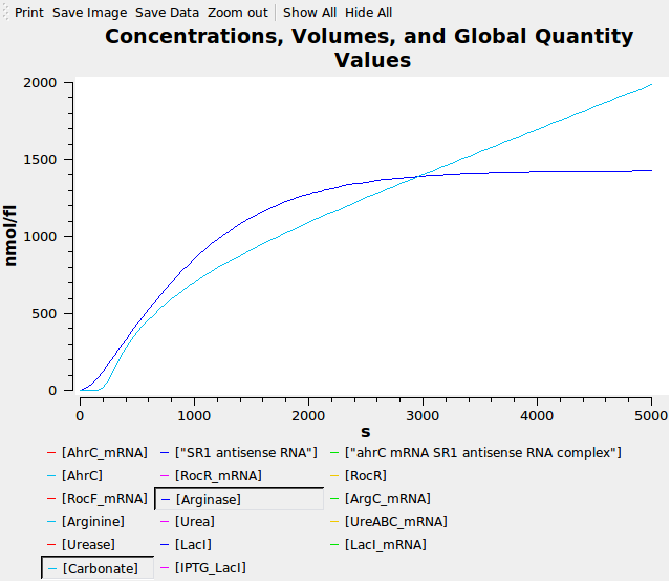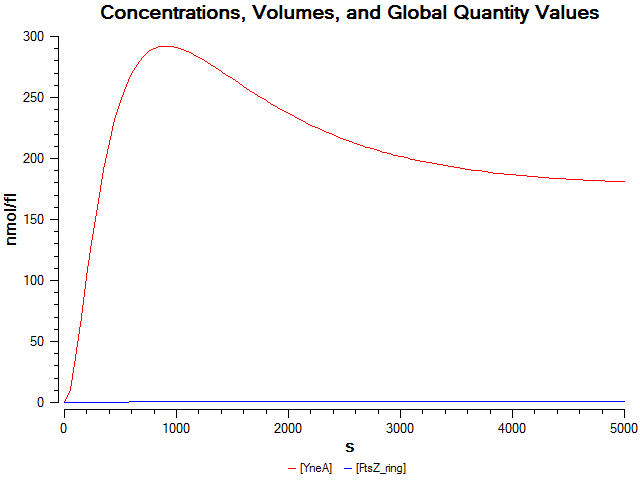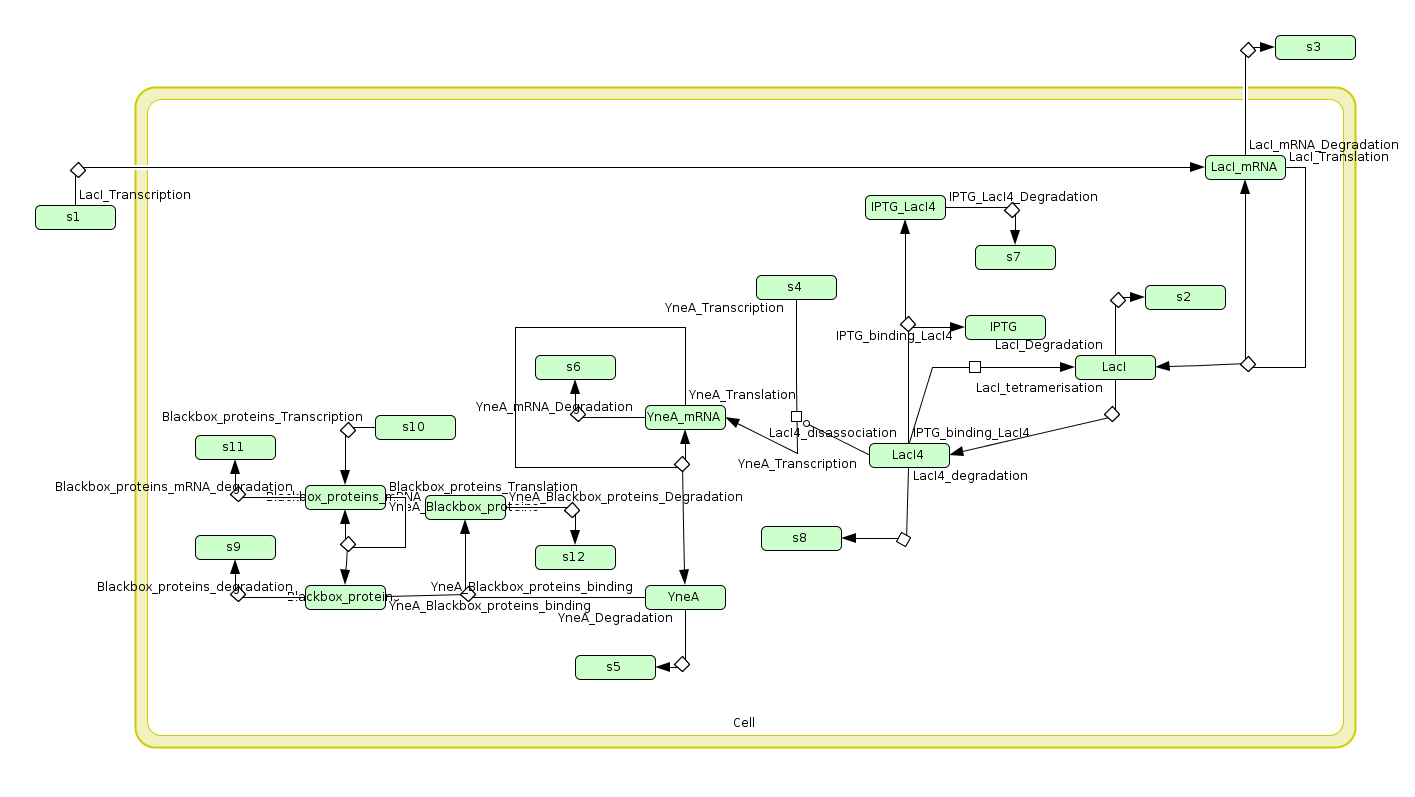Team:Newcastle/modelling
From 2010.igem.org

| |||||||||||||
| |||||||||||||
Contents |
Modelling
In order to understand the behaviour of our parts, we computationally modelled them by encoding biochemical networks in [http://sbml.org SBML] and simulating them using [http://www.copasi.org COPASI].
Calcium carbonate
For more details, please see Calcium carbonate precipitation via urease expression.
Flux balance analysis
In order to inform our calcium carbonate part design, we performed flux balance analysis to identify pathways which indirectly lead to urea hydrolysis.
Taken from [http://seed-viewer.theseed.org/seedviewer.cgi?page=Subsystems&subsystem=Arginine_and_Ornithine_Degradation&organism=224308.1 SEED]
Downloads:
- Metabolic flux in standard conditions (maximal growth)
- Metabolic flux during maximum urease activity (reaction rxn00101, Urea amidohydrolase), showing large flux through the L-Arginine amidinohydrolase reaction (rxn00394).
- Matlab code
Biochemical network in SBML
We wrote a computational model of our calcium carbonate system in SBML and simulated it in COPASI. The graph below shows that carbonate increases over time, as desired.
Downloads:
Filamentous cells
For more details, please see Filamentous cells.
Biochemical network in SBML
We wrote a computational model of our filamentous cell system in SBML and simulated it in COPASI. The graph below shows that FtsZ ring formation is low when yneA is overexpressed.
Visualisation of the model's biochemical network in CellDesigner:
Downloads:
 
|
 "
"



